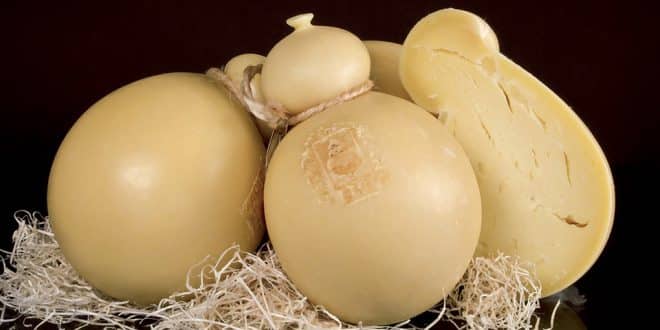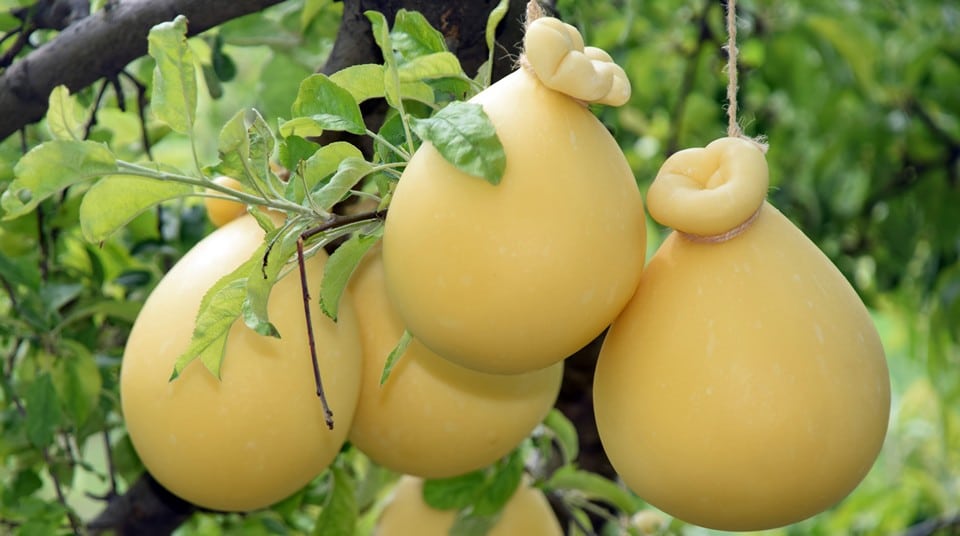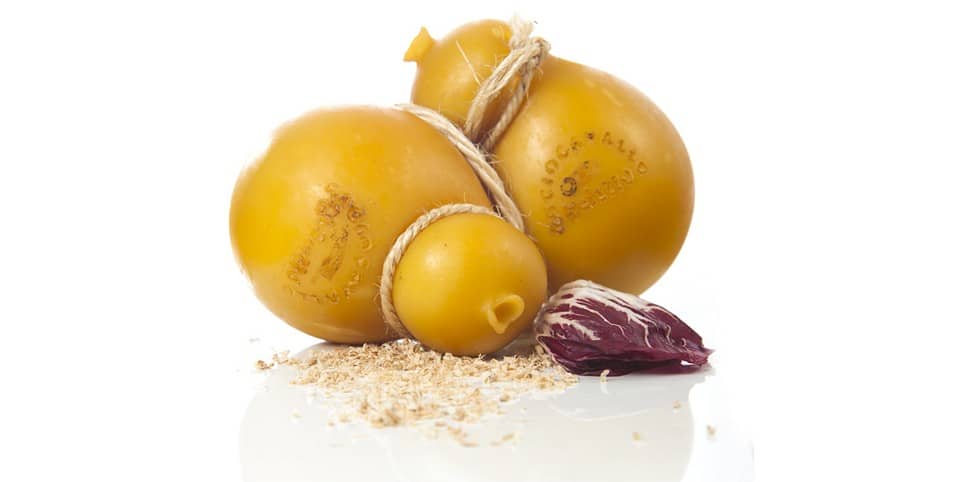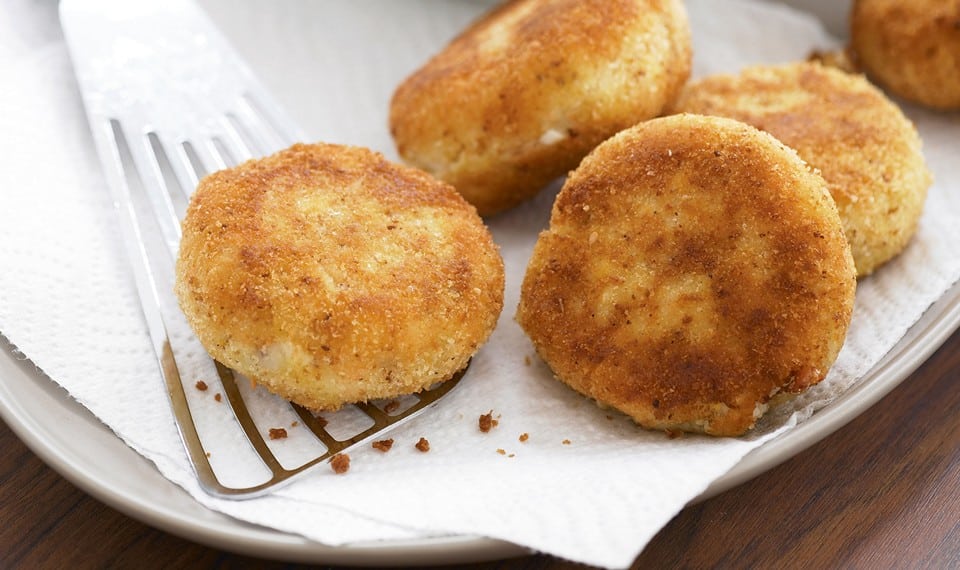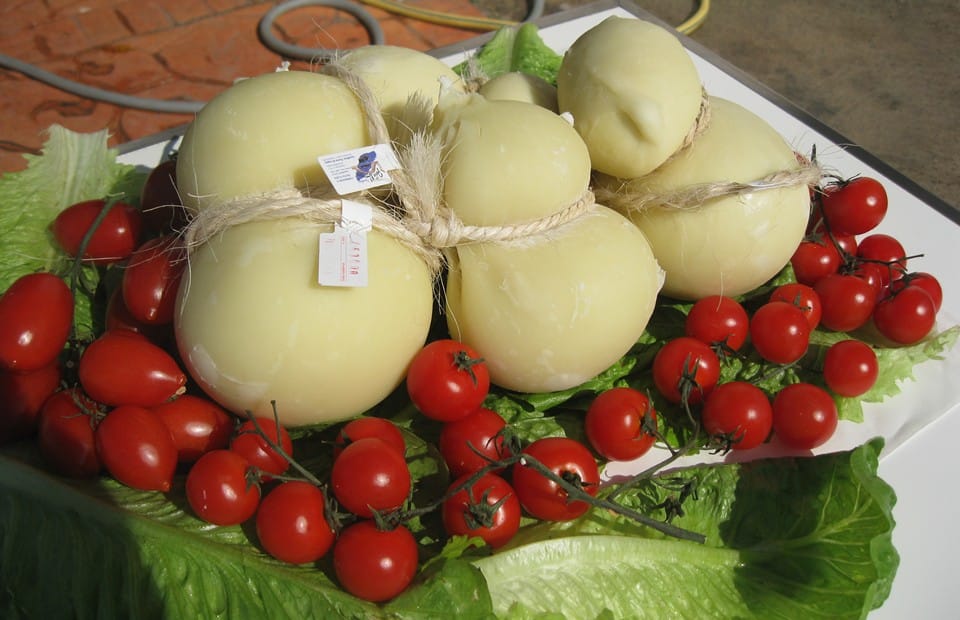Caciocavallo is a typical Italian cheese hailing from the southern regions of Italy. It falls under the Pasta Filata category of cheeses. The name literally translates to “cheese on horseback” and refers to its characteristic shape resembling a saddlebag.
While caciocavallo plays a significant role in Italy’s culinary tradition, its recipe actually owes its origins to another country. Let’s delve into the distinctive features of this cheese “rider.”
Page Contents
History of Caciocavallo
The history of caciocavallo cheese traces its origins back to Greece, from where the Romans borrowed its recipe. Its production was mentioned by Hippocrates, the Greek physician, and philosopher who lived between 460-370 BCE, in one of his books dedicated to the art of food and cooking.
Later, Pliny the Elder (22-79 CE) emphasized the unique characteristics of “butirro” (the predecessor of the current caciocavallo) in his treatise on cheeses, describing it as a “delicate food product.”
Over time, caciocavallo managed to preserve all its nutritional qualities through traditional production methods. As a result, the cheese gained wide popularity in southern Italy.
There are several versions regarding the origin of its name:
- According to one version, caciocavallo is named after its unusual aging method. It is tied in pairs with a rope and hung to dry on a beam.
- The second version suggests that the name emerged during the Kingdom of Naples (Regno di Napoli) when a horse-shaped logo was imprinted on the cheese’s surface.
- According to the third hypothesis, caciocavallo derived its name from nomadic shepherds who processed milk directly in the fields. They would hang the cheese in bags on horses’ backs when setting out to sell it.
In the Balkans, there is a cheese made from cow’s milk called Kashcaval, and some scientists suggest that Caciocavallo appeared in the Republic with its own name, eventually acquiring an Italian sound.
In 1996, Caciocavallo Silano was recognized as a Protected Designation of Origin (DOP) product.
How it’s made
Caciocavallo is produced in several regions of Italy: Basilicata, Calabria, Campania, Molise, Puglia, Abruzzo, Sardinia, and Sicily. However, only the first five regions mentioned obtain the raw materials and produce Caciocavallo Silano DOP.
To make Caciocavallo, cow’s milk is used, although it can be mixed with sheep’s milk. The Silano variety is exclusively made from cow’s milk.
The cheese-making process begins by coagulating the milk at a temperature of 36-38 degrees Celsius (96-100 degrees Fahrenheit) with rennet obtained from calves or kid goats. Some producers also add whey left from the previous day. After a few minutes of reaching the desired temperature, a curd forms, which the cheesemaker breaks into pieces the size of a hazelnut.
Next comes the maturation stage of the curd, which lasts for 4-10 hours. During this time, the cheesemaker takes small samples by immersing them in hot, but not boiling, water. If the curd becomes elastic and stretches without breaking, it indicates that the process is complete.
Then, the divided portions of the curd are immersed in hot water and manually shaped into smooth balls without any internal voids, giving them the final “bag” appearance.
The cured heads are washed in cold water and immersed in a salt solution for at least 6 hours. The salted cheese is tied in pairs and hung on a beam for a minimum of 30 days of aging. However, mature Caciocavallo cheese, aged for about a year, is highly valued.
There is a smoked variety of Caciocavallo called Caciocavallo affumicato. It is aged for over 60 days and smoked using either wood or dried straw.
Characteristics of Caciocavallo
The most distinctive feature of Caciocavallo cheese is its shape, resembling a sack with a large oval body at the bottom and a small round part on top. The two parts are separated by a string, typically made of plant materials. Not many people know that the presence of the upper “head” is not mandatory, and some producers release the product without it. The weight of the heads can range from 0.5 to 2.5 kg (1.1 to 5.5 lbs).
The cheese rind is smooth and relatively thin, with a light yellow color. The color intensifies as the cheese ages. The smoked version has a golden-brown surface. Some types of Caciocavallo cheese are coated with a thin layer of paraffin, making the rind inedible.
The young Caciocavallo cheese has a white, firm cheese mass with a sweet and delicate flavor. As the cheese ages, the cheese paste takes on a straw-like color, develops typical small holes, and the taste becomes spicy and sharp. The aroma of Caciocavallo affumicato is vibrant with smoky notes.
- Read also: Differences between scamorza, provolone, and Caciocavallo cheese.
How to enjoy it
Caciocavallo cheese is perfect for both standalone consumption and many dishes. In southern Italy, it is often served with rustic bread made from hard wheat varieties. For example, in Apulia, people prefer Almatura bread (Pane di Altamura), which is classified as DOP (Denominazione di Origine Protetta).
The cheese wonderfully enhances the flavor of many recipes. When grated, it is used in the preparation of classic pasta dishes, pizzas, and roasted vegetables such as eggplants and zucchinis.
Aged Caciocavallo cheese, with its sharp taste, pairs perfectly with salami. The smoked version is frequently used to add a smoky aroma to soups and stews.
Young cheese is remarkable when combined with fruits such as pears and melons, balsamic vinegar, red onions, berries like cherries, nuts, and dried fruits. For those who appreciate flavor contrasts, trying Caciocavallo cheese with chestnut honey, which has a subtle bitterness in the aftertaste, is worth it.
The choice of wine is based on the age of the cheese. For young and sweet cheese, a white wine with a slightly bitter taste is suitable, such as Soave Superiore, produced in the province of Verona. Aged Caciocavallo cheese pairs well with medium-aged red wines, such as Aglianico del Vulture or Cirò rosso classico.
And once again, we have a simple homemade recipe for an unusual dish.
Caciocavallo Cheese Pancakes
Here’s everything you need for these original Italian pancakes:
- 300 grams of Caciocavallo cheese
- 150 grams of bread crumbs
- 5 eggs
- 1 tablespoon of milk
- Parsley, nutmeg, salt, and pepper to taste
- 100 grams of flour
- Vegetable oil for frying
- Lemon (optional)
So, in a suitable container, mix the bread crumbs, finely grated cheese, and 3 eggs. Stir well, and if the bread crumbs are not moistened, add milk, followed by the seasonings, and mix thoroughly again. From the resulting mixture, form small balls about the size of a walnut, roll them in flour and beaten eggs, and fry in preheated vegetable oil until golden brown. It’s best to enjoy these pancakes while they’re hot, lightly drizzled with lemon juice and sprinkled with grated lemon zest. Bon appétit, dear readers!
Caloric Content and Benefits
Caciocavallo cheese is considered relatively high in calories. Its nutritional value per 100 grams consists of:
- 439 kcal
- 37.56 grams of protein
- 31.3 grams of fat
- 1.86 grams of carbohydrates
- 92 mg of cholesterol
Due to its high caloric content, the recommended daily intake of Caciocavallo cheese for healthy individuals should not exceed 40-50 grams.
Based on a portion of 50 grams, the following beneficial properties of the cheese can be noted:
- Provides the body with 38% of the daily requirement of proteins necessary for the synthesis of many substances in the body.
- Serves as a source of 430 mg of calcium (54% of the daily requirement) and 295 mg of phosphorus (37% of the daily requirement), which are essential for the healthy development of bones, teeth, muscles, and the nervous system.
- It covers 26% of the daily need for vitamin A, which is responsible for sharp vision and healthy skin, and 15% of riboflavin, which is involved in blood formation, immune system function, and reproductive organs.
People with high blood pressure should not consume excessive amounts of Caciocavallo cheese due to its relatively high sodium content.
Price in Italy
You can only indulge in authentic caciocavallo when you are in Italy. Thanks to its wide availability, you will be able to find it in almost any cheese boutique, priced between 8.5 and 20 euros per kilogram, depending on its age. However, some producers may offer their product at a higher cost, reaching up to 40 euros for aged cheese.
That concludes the available information about caciocavallo. Live wisely, eat beautifully, travel with enthusiasm, and remember what the Italian shepherds used to say: “To a gifted horse, they first attach caciocavallo to its back, not check its teeth!”
Interesting Facts about Caciocavallo
- Caciocavallo, a traditional Italian cheese, has a fascinating history that dates back centuries. It was originally created by Southern Italian shepherds, who would hang the cheese by pairs on a wooden stick resembling a horse’s saddle, hence its name “Caciocavallo,” which translates to “cheese on horseback.”
- Caciocavallo is known for its unique shape. The cheese is typically elongated and teardrop-like, with a characteristic head and neck. This shape is not only aesthetically pleasing but also serves a practical purpose, as it allows the cheese to be easily hung for aging and storage.
- The flavor profile of Caciocavallo is rich and savory, with a slightly tangy and nutty taste. As it ages, the cheese develops a deeper and more complex flavor, making it a favorite among cheese connoisseurs who appreciate its robust and distinctive characteristics.
- One interesting tradition associated with Caciocavallo is the “battle of the cheeses” or “lotta dei formaggi.” In certain regions of Southern Italy, locals gather for an annual event where participants swing and collide Caciocavallo cheeses against each other, aiming to break their opponent’s cheese. It is a lighthearted competition that celebrates the cheese’s cultural significance.
- Caciocavallo is a versatile cheese that can be enjoyed in various ways. It can be eaten on its own, sliced and added to charcuterie boards, or melted over grilled vegetables, pasta, or even pizza. Its smooth and meltable texture makes it a fantastic choice for creating gooey and delicious dishes.
- In Italian culinary tradition, Caciocavallo is often used for the famous dish “Caciocavallo alla pizzaiola.” It involves topping the cheese with a flavorful tomato sauce, oregano, and sometimes anchovies, then baking it until the cheese is melted and bubbly. The result is a mouthwatering combination of flavors that showcases the cheese’s versatility.
- Caciocavallo is made using cow’s milk, although variations using sheep’s or goat’s milk can also be found. The cheese undergoes a process of curdling, molding, and aging, which contributes to its unique taste and texture. Traditional methods are still employed by artisan cheesemakers, ensuring the preservation of its authentic character.
 Italy for me From Italy with love
Italy for me From Italy with love

